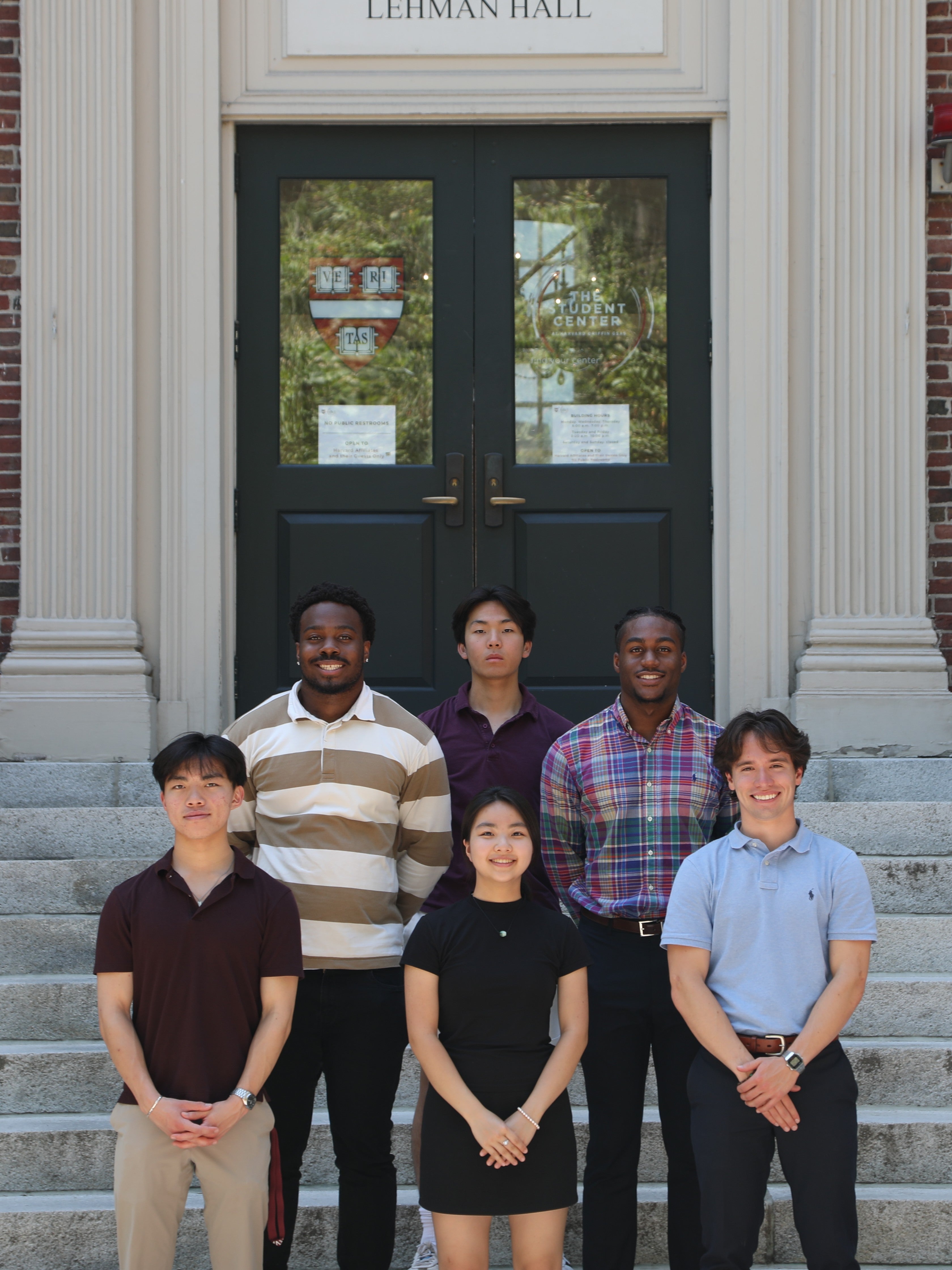By Radhika Ganesh
Abstract:
This paper discusses the limitations of electrolysis and how alternative methods like chemical oxygen generation or molecular gas-phase synthesis could better support extended mission durations. Using a comparative analysis and argumentative format, the study evaluates the possibility of such methods. The findings suggest that while electrolysis is the most effective life support system (LSS) for short-term space travel, it is not sustainable for deep-space missions. Instead, emerging technologies like artificial photosynthesis and molecular gas-phase synthesis require less development to acquire these deep-space qualities, though research in this area remains underdeveloped. Further development on these ideas are crucial as a next step for humans to become an interplanetary species.
Introduction:
This paper reviews the functionality of electrolysis and highlights viable alternatives for oxygen generation in space. Oxygen is vital for human survival, but in space natural oxygen count is almost negligible. Oxygen for space missions must be either produced or transported on board, like the usage of electrolysis on the International Space Station (ISS) (“Advanced Oxygen Generation - NASA”). The Life Support System (LSS) utilizes the electrolyzer setup (consisting of an anode and cathode) that sends electric currents through water, separating them into hydrogen (fuelling), and oxygen (life support). However electrolysis has complications, it uses large water reserves that increase payload weight and costs for the Oxygen Generation Assembly (OGA) unit. The ISS constantly needs water refueling missions, such as the Progress 41 (2011) where 15% of its cargo was dedicated to water reserves. These missions produced exceeding material wastage and higher costs of maintenance. For electrolysis to produce 1 kg of oxygen per hour over a week; it adds 189.168 kg of water weight for the mission, posing a significant mass. A one-way trip to Mars takes 9 months, therefore requiring 1.84 metric tons of stored water (1840 kg), which is impractical for long-term space missions. According to W. Jones NASA, electrolysis is underqualified for a manned mission to mars due to factors like reduced reliability, increased mass, and little safety. Given these challenges, several alternatives have been explored in order to enhance oxygen generation efficiency, payload weight, and refuelling cost. One includes chemical oxygen generation, which produces oxygen using the breaking down of solid compounds like lithium perchlorate, or iron and sodium chlorate (“Chemical Oxygen Generator - Molecular Products”), but are in limited supply making it unsustainable for frequent journeys. Artificial photosynthesis uses biomimetic catalysts to mimic earth's natural oxygen cycle, but this causes it to be slow and unreliable during emergencies. These traditional technologies created in the Apollo era are now out of date now for deep-space missions. New technologies like Molecular gas-phase synthesis remain underexplored yet could potentially revolutionize future space missions. This raises the question, What true limitations does electrolysis in oxygen generation pose, and how can alternative methods like chemical oxygen generation and molecular manipulation enable extended space mission duration?
Thesis: Electrolysis has been the predominant method of oxygen generation in past space missions, yet its reliance on large water reserves presents constraints for future long-term missions. Optimizing methods like chemical oxygen generation could reduce the payload weight and enhance sustainability significantly. Furthermore, emerging solutions such as molecular-level gas-phase synthesis hold the potential to revolutionize future missions by minimizing resource dependency in prolonged mission times.
Water electrolysis is the process in which H20 is separated into hydrogen and oxygen (Shih et al.). It consists of an anode and a cathode which zap an electric beam into water in order to separate hydrogen and oxygen. The anode separates the molecules into 2H2O→O2+4H++4e− which produces oxygen gas and the cathode uses negative electron reduction to 4H++4e−→2H2 which produces hydrogen gas (fuelling) (Rashid et al.). However, this process falters as a reliable LSS due to its high energy consumption. While theoretically the minimum voltage used for electrolysis is 1.23V, due to resistance and energy loss, increased amounts of voltage is needed (Mazloomi and Sulaiman). This also leads to increased production costs resulting in reduced electrolyte quality and efficiency, adding acids act as a short-term solution but excess leads to erosion and shortens system lifespan.
Shih, Arthur J., et al. "Water Electrolysis." Nature Reviews Me
Modern catalysts are built in order to accelerate the process of OGA and can be customized in order for maximum efficiency. Currently alloys that can be used to maximise this process are expensive [e.g. Platinum (Pt) or Iridium Oxide (IrO₂)] while research has been going around catalysts with cost efficiency (e.g. Nickel, Cobalt, or Iron) it hasn’t been fully developed or doesn’t activate the process to its fullest potential. In order to do so these solutions have been formed: nanostructuring, doping, and using simulations and models to determine the best catalyst designs (Chatenet et al.).
To optimize this solution to modern times and longer space travel times, balancing electrolyte composition and compatibility and minimising resistance and overvoltage in a machine would provide a multitude of benefits. Yet such improvements still don’t make this technology compatible with deep-space travel, it just makes short-term travel more efficient. That's why many substitutes are under development.
Chemical oxygen generation is a process in which oxygen is produced through chemical reactions. There are three sort of reactions that can occur during this process: thermal decomposition (e.g. 2NaClO3→[+heat]2NaCl+3O2), CO2 reaction with moisture and potassium superoxide (4KO2+2CO2+2H2O→4KCHO3+3O2), and peroxide based generation (elements like sodium or lithium peroxide can absorb CO2 to produce oxygen).
Ward, Kevin R., et al. "Chemical Oxygen Generation." Respiratory Care, vol. 58, no. 1, 2013, pp. 184–195. https://rc.rcjournal.com/content/58/1/184.
While chemical oxygen generation has a very high oxygen yield, it is frequently created for emergency situations or one time use. This leads to mass wastage after deployment, even though they are easily accessible in times of need (Molecular Products). Alternatives have been created for this growing issue, including on-site oxygen generators such as pressure swing absorption (PSA) and vacuum pressure swing absorption (VPSA) (Oxymat). These technologies produce oxygen in an orderly manner, minimizing waste produced by chemical oxygen generation. The more possibility PSA’s and VPSA’s have to grow, the lower carbon footprints come in the field of space travel (Absstem Technologies).
Due to chemical oxygen generation's fast paced use, it may not always be the best solution when it comes to long-term space travel. While the process produces a higher quantity of oxygen in a short period which is vital for emergencies, it is not sustainable for longer missions without excess waste being produced. While solutions like PSA’s exist, they are still under production and don’t solve the problem of easy long-term use.
Artificial Photosynthesis uses photoelectrodes constructed of titanium dioxide or perovskites. These materials are the ones who conduct sunlight to create an electric current amongst electrons ("Artificial Photosynthesis: Current Advancements and Future Prospects"). These currents ‘excite’ the electrons and cause the water to split with the aid of catalysts such as nickel-molybdenum-zinc (NiMoZn) ("Challenges of Artificial Photosynthesis"). Some LSS process CO2 which is then converted to methanol or methane through the same process which can be stored as efficient fuel for the flight. This OGA is useful because it's sustainable, carbon neutral, and biomimetic (Lerner), yet this solution is out of reach due to its inefficiency in comparison to natural photosynthesis and its exclusive expensive materials, it is also difficult to produce for commercial use.
Slow reaction rates are a major degrading point to this LSS, energy inefficiency in artificial photosynthesis mostly comes from poor charge separation or low catalytic ability ("Editorial: Current Challenges in Photosynthesis"). In order to address this issue, scientists have come with solutions like single atom catalysts or metal-organic technology ("Natural and Artificial Photosynthesis"). Yet photocorrosion and electrolyte degradation remain a major issue in this field, methods to prevent this (e.g. specialised coatings) are still under creation. But the major problem still remains; the space environment challenges. As we explore beyond the nearest planets to earth, we will experience low solar intensity which brings down the ability to photosynthesize. Water also remains a problem as a constant supply of water in deep-space travel is hard to find and one of the main reasons focusing on different oxygen generation methods are important.
Altogether each OGA method has its own strengths and downsides. Electrolysis is the most effective for short-term space missions or special cases like the ISS where water can be frequently supplied, but to optimize needs a strong power source. Chemical oxygen generation is good as an emergency supply but not for long-term use. Artificial photosynthesis has long-term potential yet still faces issues with scalability and efficiency.
Molecular gas-phase synthesis is an important technique in science, allowing for the production of nanoparticles and molecular structures. Recent advancements have introduced methods to enhance efficiency and expand the applicability of this process. One method is magnetron sputtering along with multiple ion cluster sources, which replaces a single magnetron with three independent magnetrons (Marek et al.). Another breakthrough is the one-step gas-phase synthesis of few-layered compounds (Yue et al.), which has been used to fabricate materials such as Ti₂NCl₂ and Ti₂CCl₂ in a gas-phase process. This simplification streamlines synthesis and may lead to the discovery of new materials with unique properties. Also, researchers have developed a gas-phase synthesis method for C₄₀ nano bowls, utilizing molecular beam experiments and electronic structure calculations (Zhen et al.). This research provides insights into the formation mechanisms of carbon-based nanostructures, which are important for materials science.
Theoretical models play a significant role in guiding gas-phase synthesis research, helping scientists understand reaction mechanisms, and optimize process parameters. Although gas-phase synthesis is studied in laboratories, direct testing in space remains limited. Most experimental studies occur in ground-based laboratories that mimic conditions of space. However, these studies provide crucial insights into chemical processes in space and inform the development of materials and technologies for space exploration. Future research may involve testing these synthesis methods in microgravity or extraterrestrial environments, which could advance our knowledge of chemical processes beyond Earth (Balucani et al.). This step would be crucial for developing new materials suited for space missions and extraterrestrial habitats.
Method:
This research paper is argumentative and follows a theoretical and comparative approach. Analyzing academic studies on different oxygen generation methods and their feasibility for long-term space missions. In this paper, information was sourced from sources such as NASA, and other scholarly articles. The selection criteria was sources on oxygen generation methods between 2010 - 2025.The information was comparatively analyzed by evaluating efficiency, scalability, and sustainability of electrolysis, chemical oxygen generation, and molecular gas-phase synthesis. While researching there was a limit to the amount of information to consume due to the topic being recent. Its exposure was little to none meaning only a few test accounts were taken into consideration. These tests could have all been outliers as not enough have been conducted. Thus proving the point in which this field must be explored much deeply. Not to mention, only certain sources were accessible due to financial constraints which caused the information stream to narrow.
Conclusion:
Now the question is how can this process be optimized for high efficiency? Many theoretical models predict high efficiency, but do experimental results align with these predictions?
While many theoretical models of molecular gas-phase synthesis record high efficiency, especially in processes like electrolysis, CO₂ reduction, and plasma-based reactions (Cooke et al.). These models are often based on ideal conditions and suggest specific reaction rates, minimal byproducts, and high energy efficiency (Bertolotti et al.). However, experimental results often show discrepancies due to real-world challenges such as slower reaction rates, inefficient catalysts, energy losses, and material degradation. Factors like microgravity in deep space further entangle experimental correctness (Marek et al.), leading to discrepancies in theoretical predictions. While tests demonstrate potential, real-world and space-based applications face stability issues (Zhen et al.). Despite these challenges, advancements, AI optimization, and environmental adaptation would possibly help bridge the gap between theory and practical use.
Citations
“Chemical Oxygen Generator - Molecular Products.” Molecular Products, 9 Sept. 2022, www.molecularproducts.com/chemical-oxygen-generator.
“Advanced Oxygen Generation - NASA.” NASA, www.nasa.gov/podcasts/houston-we-have-a-podcast/advanced-oxygen-generation.
Tagawa, Masahito, et al. "Atomic Oxygen Generators for Surface Studies in Low Earth Orbit." AIAA Journal, vol. 32, no. 1, 1994, pp. 167–172. https://doi.org/10.2514/3.11955.
Mazloomi, S.K., and Nasri Sulaiman. "Influencing Factors of Water Electrolysis Electrical Efficiency." Renewable and Sustainable Energy Reviews, vol. 16, no. 6, Aug. 2012, pp. 4257-4263. https://doi.org/10.1016/j.rser.2012.03.052.
Chatenet, Marian, et al. "Water Electrolysis: From Textbook Knowledge to the Latest Scientific Strategies and Industrial Developments." Chemical Society Reviews, vol. 51, no. 11, 2022, pp. 4583–4762. Royal Society of Chemistry, https://doi.org/10.1039/D0CS01079K.
Rashid, Md Mamoon, Mohammed K. Al Mesfer, Hamid Naseem, and Mohd Danish. "Hydrogen Production by Water Electrolysis." International Journal of Engineering and Advanced Technology (IJEAT), vol. 4, no. 3, Feb. 2015. ISSN 2249-8958.
"Chemical Oxygen Generator." Molecular Products, https://www.molecularproducts.com/chemical-oxygen-generator. Accessed 7 Feb. 2025.
"The Role of Industrial Oxygen Generators in Sustainable Manufacturing." Absstem Technologies, https://absstem.com/the-role-of-industrial-oxygen-generators-in-sustainable-manufacturing. Accessed 7 Feb. 2025.
"Oxygen Generators for Gold Mining: A Key to Sustainable Cyanidation and Autonomy from Oxygen Supply." Oxymat, https://oxymat.com/blog/oxygen-generators-for-gold-mining-a-key-to-sustainable-cyanidation-and-autonomy-from-oxygen-supply. Accessed 7 Feb. 2025.
"Artificial Photosynthesis: Current Advancements and Future Prospects." National Center for Biotechnology Information, https://www.ncbi.nlm.nih.gov/pmc/articles/PMC10807655/.
"Challenges of Artificial Photosynthesis." ChemistryViews, https://www.chemistryviews.org/details/ezine/7292982/Challenges_of_Artificial_Photosynthesis/.
Lerner, Louise. "Chemists Create an 'Artificial Photosynthesis' System That Is 10 Times More Efficient Than Existing Systems." University of Chicago News, 10 Nov. 2022, https://news.uchicago.edu/story/chemists-create-artificial-photosynthesis-system-10-times-more-efficient-existing-systems.
"Editorial: Current Challenges in Photosynthesis: From Natural to Artificial." National Center for Biotechnology Information, https://www.ncbi.nlm.nih.gov/pmc/articles/PMC9850143/.
"Natural and Artificial Photosynthesis: Fundamentals, Progress, and Future Directions." SpringerLink, https://link.springer.com/article/10.1007/s11120-022-00982-z.
"Artificial Photosynthesis at Efficiencies Greatly Exceeding That of Natural Photosynthesis." ACS Publications, https://pubs.acs.org/doi/abs/10.1021/acs.accounts.9b00380.
"Using Nanoparticle Materials in Artificial Photosynthesis." NikaLyte, https://www.nikalyte.com/using-nanoparticle-materials-in-artificial-photosynthesis/.
Cooke, S. A., et al. "Experimental Studies of Gas-Phase Reactivity in Relation to the Formation of Complex Organic Molecules in Star-Forming Regions." ACS Earth and Space Chemistry, vol. 3, no. 5, 2019, pp. 873–884.
Bertolotti, M., et al. "Combining Experimental and Theoretical Methods to Learn about the Gas-Phase Reactivity of Complex Organic Molecules." Energy & Environmental Science, vol. 7, no. 11, 2014, pp. 3580–3590.
Marek, Antonín, et al. "Gas-Phase Synthesis of Nanoparticles: Present Status and Perspectives." MRS Communications, vol. 8, no. 2, 2018, pp. 343–357.
Zhen, Junfeng, et al. "Gas-Phase Synthesis of C₄₀H₁₀ Nano Bowls: A Combined Experimental and Theoretical Study." Nature Communications, vol. 14, no. 1, 2023, article 37058.
Cooke, S. A., et al. "Experimental and Theoretical Studies of the Gas-Phase Reactions of O₁D with H₂O and D₂O at Low Temperature." The Journal of Physical Chemistry A, vol. 127, no. 1, 2023, pp. 1–10.





